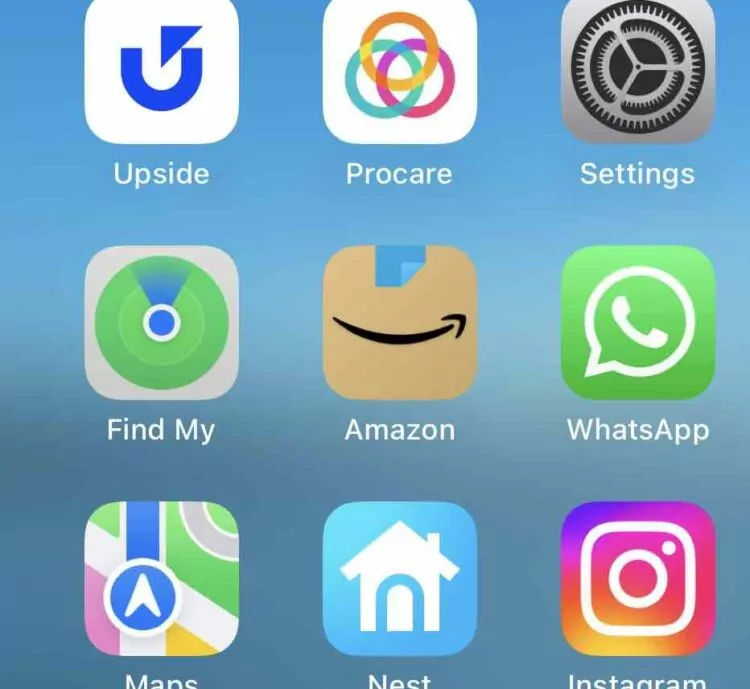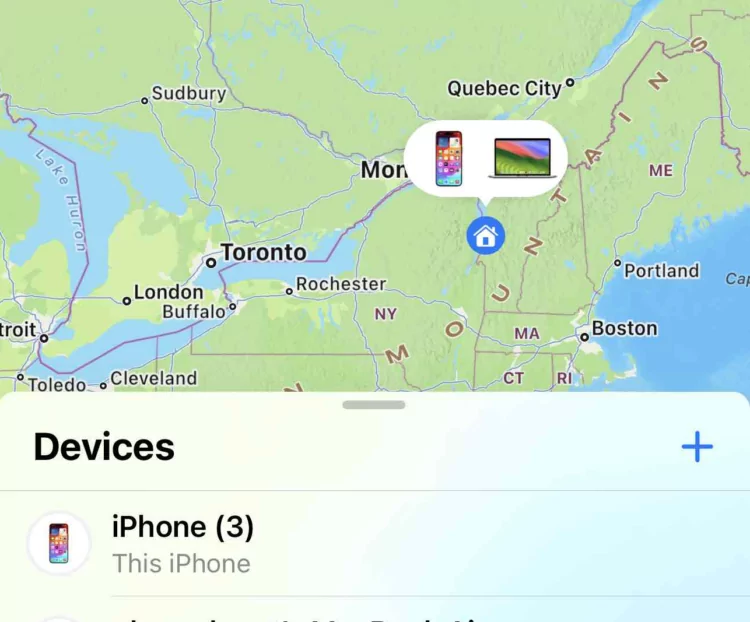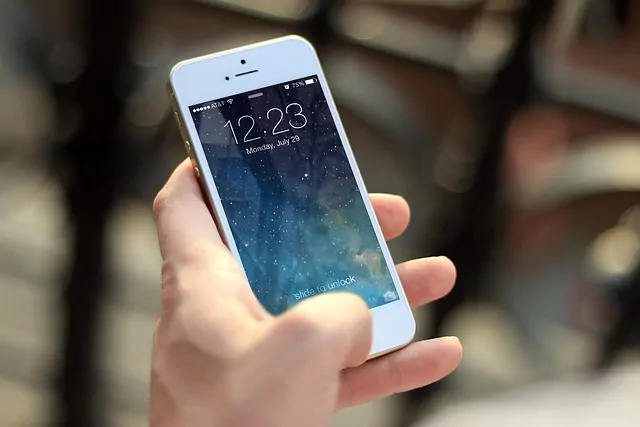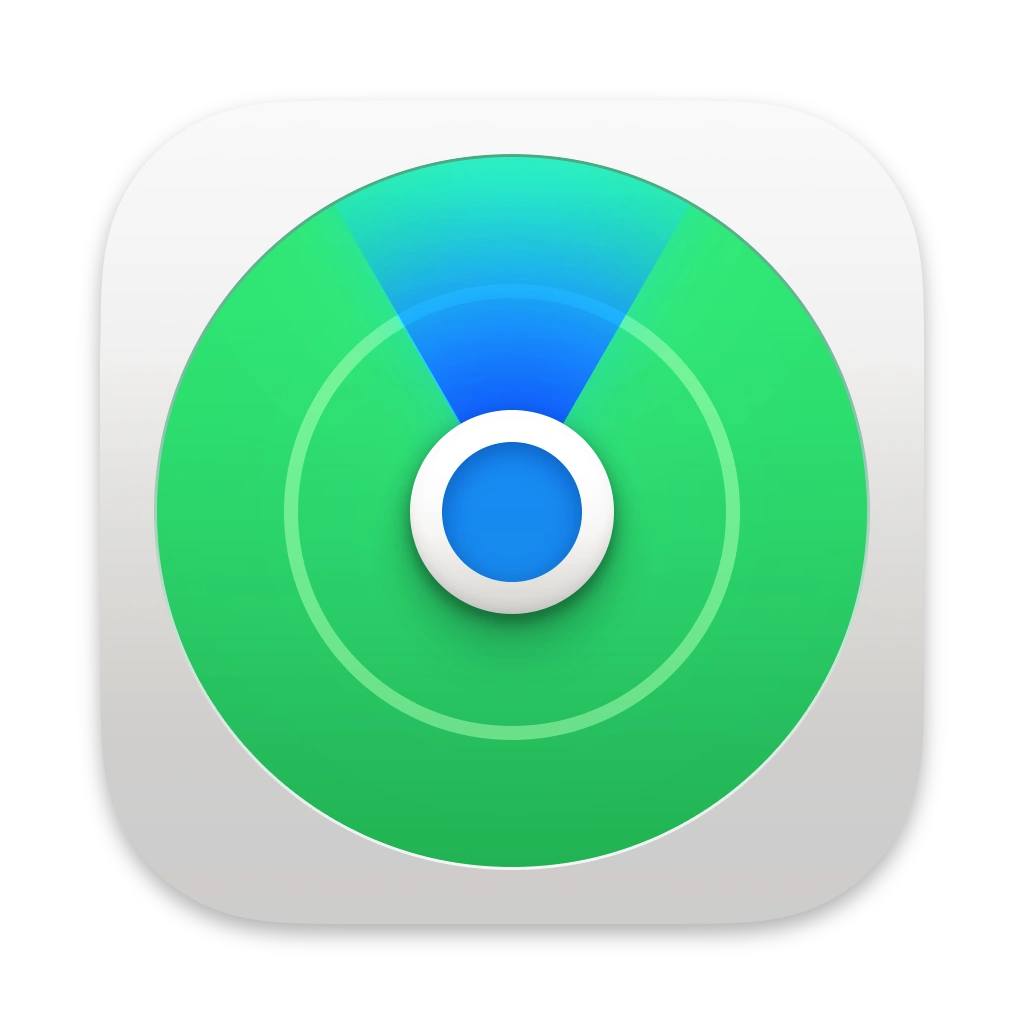Imagine you are in a busy cafe, sipping your coffee while fully engrossed in your favorite novel. You go for a quick restroom break and when you return, you are shocked because your iPhone is not on table. Feeling overwhelmed is quite normal. However, when you come to your senses, you remember the ‘Find My iPhone’ feature. You breathe a sigh of relief because, luckily, a few days back, you had enabled that feature. But a question pops up in your mind: “How accurate is Find My iPhone?”
Although this is an excellent feature in Apple devices, it comes with its limitations. So, Is Find My iPhone accurate enough to pinpoint your device in a city with close buildings?
Today, you will get to know more about its accuracy and how you can have a better chance of recovering your phone by altering some settings.

Understanding How ‘Find My iPhone’ Works
the “Find My iPhone” feature is a sophisticated system that uses multiple technologies to track the location of your device. Here’s an expanded look at how each technology contributes to the system:
GPS (Global Positioning System): GPS is a satellite-based navigation system that provides location and time information under all weather conditions, anywhere on or near the Earth. It operates by sending signals from the device to GPS satellites, which then transmit their data to tracking stations on Earth. The system requires a line of sight to four or more GPS satellites to pinpoint a location.
Wi-Fi Positioning: Wi-Fi positioning supplements GPS by using the known locations of Wi-Fi networks. iPhones have a database of Wi-Fi hotspots and their locations. When the device picks up a Wi-Fi signal, it can use the known location of that Wi-Fi network, along with signal strength, to determine the device’s position. This method is particularly useful indoors or in urban areas where GPS signals may be obstructed.
Cellular Data Triangulation: When GPS and Wi-Fi are unavailable or unreliable, the device can use cellular data triangulation. This method estimates the device’s position using the locations of nearby cellular towers and the signal strength to each tower. The more towers the phone can “see,” the more accurate the location estimate will be.
Combining Technologies for Accuracy: “Find My iPhone” uses a hybrid approach, combining all three technologies. It starts with the most precise method available (typically GPS) and then fills in any gaps with Wi-Fi and cellular data. This approach ensures that the location is as accurate as possible, given the available data.
Factors Affecting Accuracy: The accuracy of “Find My iPhone” depends on the density of GPS satellites, Wi-Fi hotspots, and cellular towers within range of the device. Urban environments tend to offer the highest accuracy because of the high density of Wi-Fi networks and cellular towers. However, even in cities, the accuracy can be reduced by tall buildings that cause signal reflections and blockage. In contrast, rural or remote areas may rely more heavily on GPS, as Wi-Fi and cellular signals may be sparse.
Privacy and Security Considerations: Apple has designed “Find My iPhone” with privacy in mind. Location data is encrypted, and the company states that it cannot track your device’s location without your permission.
Overall, if you are wondering “How accurate is Find My iPhone?” just remember it is an excellent example of using multiple, overlapping technologies to provide a service that can help you find your device when it’s lost or stolen, or simply keep track of its location for other purposes. It’s a robust system that takes advantage of the strengths of each technology to mitigate the weaknesses of others.

Testing the Accuracy of ‘Find My iPhone’
The “Find My iPhone” feature’s accuracy can be affected by various factors, including the device’s power state, environmental conditions, and network availability. Here’s how these factors can influence the location accuracy:
Accuracy When the Device is Off:
- Devices Running iOS 13 or Later: With iOS 13 and later, Apple introduced a feature that allows iPhones to be found even after they have been turned off. This is possible because the device maintains a low-power state that can still emit Bluetooth signals, which can be detected by nearby Apple devices.
- Power Reserve Mode: Some devices have a power reserve mode that can last several hours after the battery dies, which can still send out the last location.
- Offline Finding: For devices that are offline (not connected to a cellular or Wi-Fi network), iOS utilizes Bluetooth signals to create a mesh network of Apple devices, allowing another device to pick up the signal and relay the location information back to Apple’s servers anonymously.
Environmental Factors:
- Weather: Severe weather conditions can affect GPS accuracy by interfering with signals from GPS satellites.
- Physical Obstructions: Dense foliage, buildings, and other structures can block or reflect GPS signals and Wi-Fi, leading to less accurate positioning.
- Interference: Other electronic devices, magnetic fields, and metal structures can cause interference with the signals needed for triangulation.
Device Factors:
- Battery Life: If the device’s battery is dead, it will not transmit a signal unless it’s in Power Reserve Mode (To learn more about cell phone batteries and its every changing technology find our extensive battery guide here).
- Settings: Certain location services settings need to be enabled for “Find My iPhone” to work. If these settings are disabled before the device was turned off, it may not be locatable.
- Device Condition: A damaged iPhone may not function correctly, affecting its ability to send and receive signals for location tracking.
Network Factors:
- Network Coverage: The availability and quality of cellular network coverage can significantly affect location accuracy. In areas with poor or no coverage, the device may not be able to transmit its location.
- Wi-Fi Availability: Access to Wi-Fi networks improves location accuracy, particularly indoors or in urban areas where GPS signals are obstructed. Without Wi-Fi, the device relies on less accurate cellular triangulation.
Changes Over Different iOS Versions:
- Enhanced Precision: With each iOS update, Apple aims to improve location accuracy by optimizing how the iPhone uses these signals and by updating the database of Wi-Fi and cellular network locations.
- Advanced Technologies: Newer iOS versions may use additional sensors and technologies to assist in locating devices, such as Ultra-Wideband technology for precise indoor positioning.
It’s worth noting that no technology is infallible, and the accuracy of “Find My iPhone” will always have some margin of error. However, Apple continues to improve the service with each new version of iOS, and understanding these factors can help users increase the likelihood of recovering a lost device.

Real Stories
Ted Kritsonis shared a story in which his friend’s iPhone was stolen. On New Year’s Eve, Gina and her husband hosted a dinner party at their place in Toronto. Among the 10 guests was Donnie, who was not a familiar face as he was meeting everyone for the first time.
The party was a success, with laughter and conversation filling the air until the early hours of the morning. However, when it was time for the guests to leave, Gina realized that her iPhone was missing. Even after thoroughly searching her house and the nearby places, she could not find it anywhere.
She took the help of her friend Carlos, and together they used the ‘Find My iPhone’ feature to track it. At first look, the phone appeared to be moving somewhere around downtown Toronto, leading them to believe that Donnie might have taken it. However, they could not find the phone even though they had searched all the areas where it could have been.
Finally, Gina decided to get help from the police. After taking her statement, the police personnel promised to follow up on the case. In the meantime, Gina’s husband was told everything about what had happened. The tracking now revealed that the phone was in the same spot but there seemed to be some kind of a problem getting a fix on its location.
With the police somehow clueless, they suggested that Gina should email Donnie and confront him about the situation. Donnie confessed to his crime, calling it an “honest mistake” and agreed to return the phone at a downtown hotel to avoid charges.
After confirming with the hotel about the phone, Gina’s husband picked it up. Surprisingly the phone was in good condition with all the data intact but unfortunately, no SIM card was present.
#2
In another story, Annabella, an Italian living in London experienced a distressing incident. Her cat Pip was quite ill and the vet told her that it might live for only one or two weeks.
During this time, she went shopping at House of Fraser and accidentally left her handbag unattended for just a few seconds. After returning, she was shocked. Her handbag which had her purse, home key, credit cards, cash, and her iPhone 4S with pictures of her beloved Pip, was nowhere to be found.
She got help from her friend Martin and they used the ‘Find My iPhone’ app to track her phone. This ghose chase first led them to the tracks to East Croydon station, then to the tram line, and finally ended up in New Addington at Chertsey Crescent. They found the block of flats where her iPhone should have been and Annabella rang all the bells. A woman answered and returned her phone, claiming that she got it from a girl.
These real-life examples show how powerful this feature is in locating lost or stolen devices.
Scientific Studies
Several studies have been done to measure the accuracy of this amazing feature. For example, a study conducted in 2009 showed that you can determine the location of the device within around 8 meters. In 2011, another study revealed similar results, with the accuracy between 5 to 8 meters.
More recent research done in 2019 found the range between 7 to 13 meters. So, what do you say about this feature? Well, we can say it’s close enough.

Comparing ‘Find My iPhone’ with Other Device Locating Services
When it comes to device locating services, ‘Find My iPhone’ is not the only player in the game. Android devices have a similar feature named ‘Find My Device’.
Let’s take a look at user testimonials and expert opinions to get valuable insights into its accuracy. For example, users on Influenster have given this feature a rating of 4.76 out of 5, which shows they are quite satisfied with the service.
Moreover, an article on iPhoneLife shares tips on improving its accuracy and states that the feature can be pretty accurate if you enable it properly. However, the experiences differ because of numerous factors like the device settings, environmental conditions, and network strength.
On the contrary, you can find negative reviews too. For example, a user on StackExchange shared that a stolen iPhone was offline and could not be located.
In short, while ‘Find My iPhone’ is a useful thing for many users, you can improve its accuracy. First, properly familiarize yourself with how it works.
Tips for Maximizing the Accuracy of ‘Find My iPhone’
If you are still thinking about how accurate is Find My iPhone, you should definitely consider these tips:
Settings Adjustments
1. Enable Location Services: Once you enable this service, apps can access your location. So if your iPhone is ever lost, you will know its whereabouts.
2. Enable Precise Location: You can access your phone’s exact location if you ever lose it.
3. Ensure your time zone, time, and date are set automatically to improve accuracy.
4. Update your iOS to the latest version: Keeping your device updated can ensure that all features work optimally.
5. Turn off Airplane Mode: ‘Find My iPhone’ needs an internet connection to work. If your device is in Airplane Mode, forget that you will find it.
Keeping Your Device Findable and Secure
1. Update Your Mobile Data Plan: Keeping your mobile data plan updated can help ensure that ‘Find My iPhone’ can connect to the internet and report its location.
2. Maintain Strong Connections to GPS, Wi-Fi, and Cellular Networks: The stronger these connections are, the better your chances are of finding your device.
Final Words
Let’s go through all the things that you learned today. The ‘Find My iPhone’ feature has proven again and again that it is useful and after going through this article now you also know how to take full advantage of it. Once you have understood how it works, what affects its accuracy, and its comparison with other similar locating services, you have a clear idea of this feature.
Make sure to follow our tips for the best accuracy. Consider the device settings, network strength, and environmental conditions if you want more accurate results. With that being done, you will get results within a reasonable range.
However, everyone’s experiences are different. So, share your stories as we would love to read them. Also, do mention if you have tried any other device-locating services. Your insights could help others make the most out of this feature.
So, is Find My iPhone accurate? Well, it is mostly if you know how it works and have configured the right settings.


